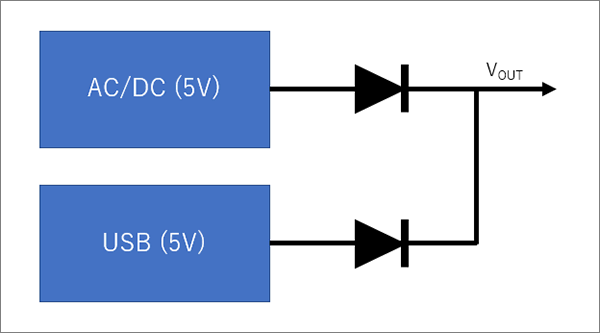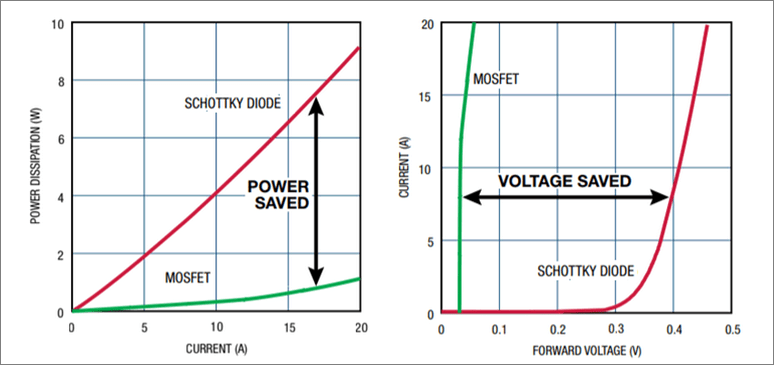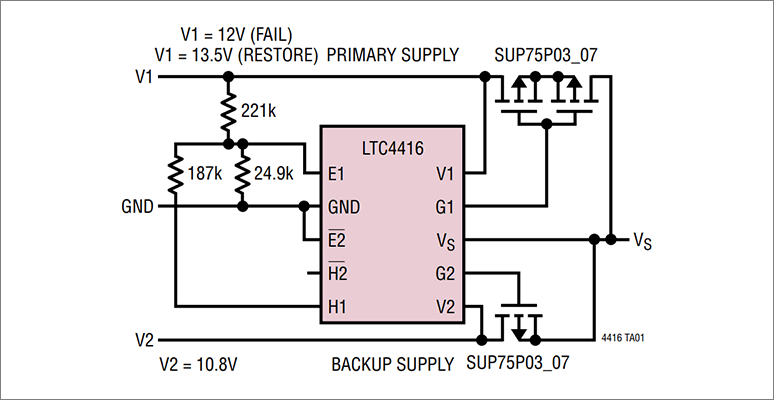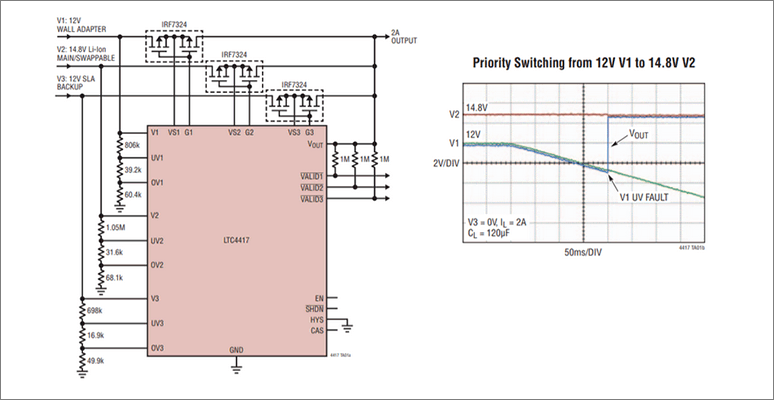Modern electronic devices allow various power supplies such as batteries, AC/DC adapters and USB. Voltage monitoring and microcomputer control are required to determine the priority of these power supplies and perform seamless switching.
Voltage monitoring and microcomputer control
In order to enable the supply of multiple power supplies, it is necessary to prevent each other's power supplies from becoming a load using a diode OR or the like.
Also, when using a battery to incorporate a backup power supply into the system, it is necessary to prioritize the hardware design, such as disconnecting it from the system so that the battery does not consume power, and the switching of the power supply.
When designing such a switching circuit as a discrete circuit, it seems that there are many problems such as not working well.
Diode OR circuit
For example, when using a diode to switch between AC/DC and USB, the circuit configuration is very simple.
However, there will be a voltage drop and power loss for the VF of the diode.
Also, if you want to use a battery as an auxiliary power supply, you need to adjust the voltage of the power supply and the switching circuit that supplies power only when there is no external power supply.

OR circuit using power FET
By constructing an OR circuit using power FETs instead of diode OR, it is possible to keep the voltage drop and power loss small as shown in Fig. 2.
However, it requires a circuit to control the power FET, and once designed, it is difficult to stabilize the operation.

OR circuit of power FET by power path products
By using the power path product LTC4416 from Analog Devices, Inc., it is possible to configure a stable power FET OR circuit.
This makes it possible to stably switch between a battery and an external power source such as USB with low power consumption.
Figure 3 shows the circuit configuration for switching between 13.5V and 10.8V supplies using the LTC4416.

Prioritizable PowerPath products
In an OR circuit that uses a diode OR or power FET, the power supply with the highest voltage preferentially supplies power to the circuit.
However, in actual applications, it may not always be possible to set the voltage of the power supply to be preferentially high.
In such cases, it is possible to configure by using the LTC4417, a power path product that can set the priority of the power supply by the pin assignment of the supply.
For example, even if there is 14.8V supplied to V2 by assigning 12V to V1 as shown in Figure 4, the 12V supply is given priority.
When the 12V supplied to V1 falls below UVLO [Under Lockout Voltage], the circuit configuration is such that 14.8V with 2nd priority is supplied as shown in the waveform diagram in Figure 4.

Inquiry
If you have any questions about this article, please contact us below!
Click here for recommended seminars/workshops
[For FPGA designers] Power trouble example seminar
LTspice & Power Supply Design Seminar Introduction <Free>
[For FPGA designers] Thermal design seminar <free>
Click here for recommended articles/materials
Click here to purchase products
Click here for manufacturer site/other related links
Powerpass product information
LTC4417 Product Information
LTC4416 Product Information

